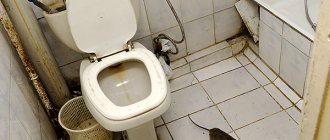How to find a hamster in an apartment quickly, alive and healthy? The animal may get hurt or damage something. Reliable methods of detection, luring out of hiding and capture will bring the stray back home.
The situation when a hamster escapes from its cage is funny only in children's cartoons. Exciting adventures with a happy ending are unlikely to await small pets in real life. The risk of getting stuck in some forgotten trash, dying of cold or thirst, or falling under the feet or in the mouth of a cat becomes more likely.
For owners, an empty cage promises only troubles:
- fear of stepping on an animal;
- a hamster can chew off wiring or ruin things with traces of its vital activity;
- you will have to sort through a large number of things, wondering where the rodents are running;
- the risk that a lost hamster will die in an inaccessible place;
But all these worries fade against the background of the tears of a child who demands to immediately find, return, save...
Why can a hamster escape from its cage?
IMPORTANT: Hamsters do not escape from cages in order to cause more trouble for their owner - they are driven by curiosity and the instinct of self-preservation.
Here are the most common reasons for running away:
- Unclosed cell. It would seem that there is nothing difficult about closing the cage, but this is one of the most common reasons for rodents escaping;
- Broken cage. X- hamsters are very small, and any hole (for example, due to a bent grille) can serve as a loophole for them into a new, unknown world ;
- Fear. Bright lights, loud noises and other irritants can terrify a small pet, and he will want to run away from them as far as possible. A completely understandable desire, isn’t it?
- Fatigue. Hamsters are nocturnal, and during the day they rest and gain strength, so there is no need to constantly demand attention from the animal. Otherwise, he will probably run away from you at the first moment in order to finally get some sleep;
- Owner's carelessness. If you pick up a hamster or let it run, don’t let it out of your sight , because curiosity in hamsters is much stronger than affection.
What to do if your hamster runs away?
Additional protection
Additional devices should be considered to prevent escape. If you are using an aquarium with a mesh top, hang a weight at each corner of the lid. This will prevent your pet from knocking over or opening the cage during play and active movements.
Veterinarians also recommend installing a metal clamp on the cage door. This will prevent any escape attempts and ensure the safety of your pet.
You can also put a security lock on the wire part of the aquarium. This will not give the hamster even a chance to lift the lid of the glass tank.
What to do if your hamster runs away?
First and foremost, isolate other pets that could cause harm to the fugitive. Next, remove, if any, all dangerous and poisonous objects that a rodent can get. (for example, sharp objects on the floor, poison from cockroaches, etc.)
IMPORTANT: When searching for a hamster, you must move furniture and other interior items carefully and as quietly as possible, because noise can scare the animal and drive it even further.
Where to look for a hamster?
Don't worry and remember that hamsters are very curious and love to explore everything carefully. If you immediately notice the animal is missing, it means that it is somewhere nearby exploring new places.
IMPORTANT: Hamsters do not try to climb as high as possible, so start your search by inspecting the floor and all hidden places on the floor.
You should inspect the apartment in the following order:
- surroundings of the cell;
- places near pieces of furniture (places under the sofa, behind the closet, under the table, etc.);
- directly pieces of furniture (in the closet, in the desk drawer, in the laundry basket and in other containers);
bags and shoes (a rodent can easily climb into a dark, warm shoe and rest carefree in it)
- holes in household appliances and electronics.
How to track an animal?
If, after a thorough search, you are still unable to find the fugitive, try to track him down.
IMPORTANT: Hamsters are nocturnal animals. Towards evening, turn off the lights in the room and sit, listening, for 10-20 minutes without moving. The animal will begin to move, thereby giving a sound signal about its location.
How to lure out a fugitive?
It is not always easy to find a hamster by inspection - there may be too many objects in the apartment, or you do not have access to cracks and openings (for example, due to immovable furniture). In this case, it’s easier to lure the hamster out using a trick: pour his food in a visible place, put his favorite toy, call your pet affectionately, and other methods described below.
How to catch a hamster?
If you find your pet, don’t immediately run to it with open arms. The hamster does not feel comfortable outside the cage, so any sudden movement will be an additional signal of danger for him.
IMPORTANT: Do not make loud noises! Slowly approach the animal, then begin to reach out your hands to it, but do not take the baby right away. Wait until he gets used to your approach a little and understands that there is no danger. After which you can take the fugitive in your arms and return him home.
If your baby is too active or timid, you can throw a waffle towel over him. In this case, the rodent's movements will be limited, and you can easily catch it.
Methods for catching a hamster
Where to look?
You can look for an escaped hamster in an apartment anywhere. Tiny animals can hide in the most inaccessible places. If he escaped before your eyes, you should immediately examine the place where he disappeared. If you don’t find the fluffy one, close the entrance door to the room.
But if there are many rooms in the house, the search task becomes much more complicated. After all, each room will now have to be monitored separately. Most often, fugitives do not leave the room where their cage is located, but there are exceptions. So what to do if the hamster runs away, where to look for your pet?
First of all, inspect the following places:
- Cabinets and other furniture. The hamster may hide behind or under the backs of dressers and cabinets. If he escaped in the bedroom, first look under the bed.
- Carpets, rugs. A frightened animal may well crawl under the rug, especially if it does not fit well to the floor. To avoid crushing the crumbs, it is better to remove the rugs.
- Heat and water supply system. Rodents love warm places, so they are able to hide under the sink or near the radiator.
- Pantry. If you have a pantry at home, then this is a paradise for a rodent. It's always quiet there and there's something to eat. If the furry friend settled down there, the search will last for weeks.
Basically, if a hamster runs away, it could be anywhere. But one thing is certain: small rodents do not jump very high, so you should look for the animal in the lower part of the premises.
How to catch an escaped animal in an apartment?
Sprinkle treats
Treats are a simple but quite effective way to bring a fugitive home. Walnuts, seeds or vegetables are suitable as bait. Place them in a bowl and place them in a visible place.
IMPORTANT: If you haven’t caught the baby by nightfall, you can do the following: place the bowl in the center of the room and sprinkle the floor around with flour. So, in the morning you can use the white tracks to determine where the hamster is hiding and return it to the cage.
However, if there are many rooms in the apartment, and you do not know which one the hamster is in, you will have to place bowls with treats throughout the apartment.
Does your hamster listen to you?
Favorite toy
If you find where a rodent is hiding, but don’t know how to lure it out, try doing this with the help of its favorite toys and attractions. Place them next to the fugitive’s “shelter”. Hamsters are very active, so sooner or later he will get bored of sitting around and want to play.
Hamster traps
If the previous methods did not work or worked, but not the way you wanted (the hamster spun the wheel, but you did not have time to catch it), try returning the baby home using traps.
Hamster traps
Types of traps
A tube
This trap is similar to a hole that rodents love to crawl into. A wide diameter hose can be used as a tube. The main thing is to close the second part so that the hamster cannot escape from the trap. An excellent option would be a tube for drawings.
Point the open end of the tube towards the rodent's new habitat. Pour treats into the tube and wait until the feeling of hunger overcomes the rodent's fear. The difficulty of this trap is that the rodent can easily be scared out of the tube if it is not sleeping.
Bucket
This trap is convenient when you were unable to detect the shelter of a small traveler. It is advisable to take a bucket with smooth walls so that the animal cannot get out of it. Build “steps” from scrap materials so that your hamster can reach the top of the bucket. These could be books, boxes - whatever comes to your mind. There should be food on the steps to motivate the fugitive to climb. For cautious rodents, you can cover the top of the bucket with paper, on which you can also sprinkle some food. This way you will definitely lure the animal into a trap. The principle of this trap is simple - the rodent walks up the steps in search of food, after which it falls into a bucket.
IMPORTANT: Make the bottom of the bucket safe from falling! Place cotton wool on the bottom, sprinkle with hay or sawdust so that the rodent does not get hurt if it falls.
Bottle
Making a bottle trap is technically more difficult than previous options. The point of the trap is that when an animal gets inside, it slams shut. Take a two or three liter bottle. The walls of the bottle should be smooth. The bottom must be carefully cut off on three sides so that it rests on only one wall. Next, bend the cut part and secure it in this position with a rubber band. After this, make a cardboard bridge and place it on the bottom edge, pointing inside the trap.
Place edible bait on the edge of the bridge, which is located inside the bottle. The hamster will climb into the bottle for food, but will not be able to get back out.
Toilet paper roll
This trap is useful when the hamster is hiding under furniture. The principle of operation is similar to the tube. Seal one side of the sleeve and place treats inside . Place the bushing next to the new house and wait until the rodent gets hungry. When he is inside, close the other side of the sleeve with your palm and take the fugitive to the cage.
How to prevent your hamster from escaping?
Real case
Case from practice: a hamster ran away at night, the owners noticed it was missing in the morning.
Due to the fact that Khoma was spinning on the wheel half the night, his cage was taken out into the room where repairs were being carried out at night. It's easy to get lost here, there are a lot of building materials, boxes, unnecessary things - this room is a paradise for a hamster. The owners noticed the escape and began searching from this room, although they did not know exactly when their pet disappeared. It didn’t take long to search - the hamster was found in a rolled up old linoleum that imitated a long pipe - here the dwarf was sleeping sweetly. The rodent did not have time to escape far, and the owners did not have to do anything supernatural to help the hamster find its home again. Not far from the “linoleum pipes” stood a bag of apples brought the day before. Several fruits fell to the floor and the dwarf gnawed on one of them. Thanks to this fact, and the knowledge that their pet loves to sit in pipes, the owners thought of looking into the rolled up linoleum. To make the hamster less likely to get lost, try to make the cage as secure as possible, because hamsters love to run away!
How to prevent escape?
Do you remember the reasons for the flight of rodents? Don't let them in!
- always check that the cage is well closed;
- regularly inspect the cage for holes and cracks;
- do not place the cage near noise centers or bright light (do not keep the cage on a shaking refrigerator or near a landline telephone);
- respect your pet. Never forget that a hamster is not a toy, but a living creature that also needs rest.
- be careful with him. Don't let your hamster out of your sight if you let it out for a walk.
Personal experience of catching a hamster
Search strategy
How to find a hamster in an apartment, using knowledge about some of the habits and habits of these animals? For example, it is known that hamsters are nocturnal animals, that is, at this time their activity increases. If you haven't found it before evening, don't get upset. Most likely, closer to midnight, people will start running around the apartment and then you can quickly notice the loss. But be careful with the rest of the family - don’t accidentally step on the animal.
Use a bait trap. Place a few sunflower seeds in some corners of your home - and the rodent will not keep you waiting. If you don't take him by surprise, you'll at least have a rough idea of where the pet is hiding. Of course, if the loss of seeds is not the work of hungry household members. Or you can be even more cunning - sprinkle the floor around the piles of seeds with flour or starch. Then the white footprints will lead you to the shelter of the lost homa. Another method to find it is to lay foil or other “rustling” material on the floor in the area of the intended hiding places. At night, hide nearby and listen to the surrounding sounds, trying not to make unnecessary movements.
Simple tips on how to find an escaped hamster in an apartment will help you determine its location. But the process of capture itself is also not an easy task. How can you competently deal with it?
rustling
You can try another method of catching a hamster. To do this, turn off all electrical appliances and lights in the room. Stay in the room with the rodent in the dark and do not move. Listen to the sounds the animal makes. You may need to wait a while. But eventually you will hear the rodent moving. You can, in order to attract a hamster, prepare carrot slices in advance. They should be tied to a string with a bell. When the animal starts eating the vegetable, you will hear a bell ringing.
Traps
You can add additional traps to the actions described above, so the chance of capture will significantly increase.
Bucket
You need to take a bucket so that the hamster does not get hurt if it gets into it, but at the same time, so that the height of its walls does not allow him to get out. For additional safety, the bottom of the bucket can be covered with cloth, sawdust, etc. to ensure a soft landing. The bucket is covered with a light cloth, you need to put a treat on it, build a ladder to the top of the bucket - also put a treat on each step, indicating the path for the rodent (the ladder can be made from books). It is advisable to make the bait from aromatic products - cheese, nuts, butter, so that your pet hears the smell and is sure to follow it. By stepping on the light fabric that covers the bucket, the animal will fall into it, becoming trapped.











